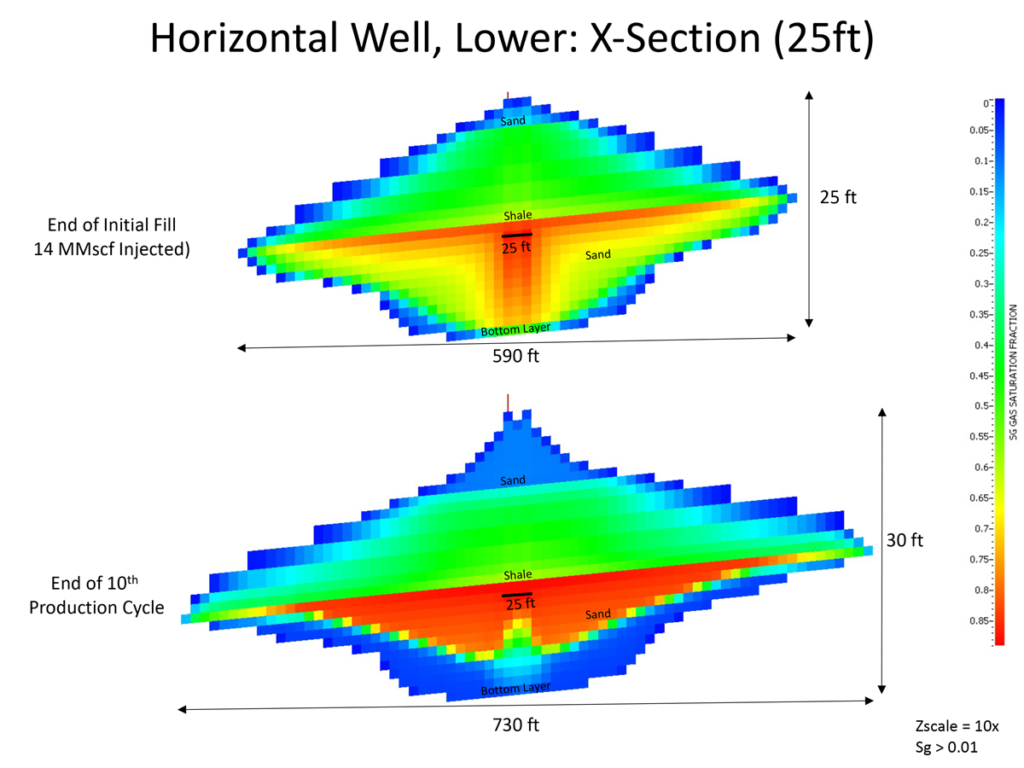Long-duration, low-emission energy storage at the utility scale is one of the major challenges to address during the clean energy transition. The U.S. National Clean Hydrogen Strategy and Roadmap released in 2023 is intended to reduce emissions by 10% across all economic sectors by 2050, create 100,000 jobs by 2030, incorporate the Hydrogen Earth Shot Program to reduce the cost of hydrogen to $1.00/kg in one decade and encompass aspects of the Long Duration Storage Shot Program, which establishes a target to reduce the cost of grid-scale energy storage by 90% for systems that deliver 10+ hours of duration within the decade. To meet the demand for the decarbonization of the electric grid, support fuel-cell supported transportation, production of biofuels, production of clean hydrogen from natural gas (utilizing CO2 subsurface storage), and promote an increase in manufacturing capacity requires long-duration storage of hydrogen in subsurface geo-media. The scale needed to meet these targets can only be achieved with hydrogen storage in geologic reservoirs for both short-cycle and seasonal recovery.
National laboratories, universities, state energy institutes, geologic surveys, and industry partners are accelerating research, demonstration projects, and screening evaluations regarding hydrogen production and energy storage. By leveraging the decades of innovative research and experience in CO2 storage at the Prairie Research Institute (PRI) and the Illinois State Geologic Survey (ISGS), ISGS is actively engaging in research and screening evaluations of hydrogen storage within the Illinois Basin. These efforts support the Midwest Alliance for Clean Hydrogen (MachH2) Department of Energy proposal to develop a Midwest hydrogen hub. In addition, PRI and ISGS are involved in the Midwest Hydrogen Partnership, which aims to attract industries and businesses with new technologies to the Midwest and facilitate the expansion of innovative research. As part of the Midwest Hydrogen Coalition, which involves seven states – Illinois, Michigan, Minnesota, Wisconsin, Kentucky, Ohio, and Indiana – Governor Pritzker signed a bill to create the Hydrogen Economy Task Force Illinois, to which the University of Illinois, PRI, and ISGS will provide input. ISGS’ hydrogen subsurface storage research efforts are foundational steps for implementing hydrogen as a building block in our transitional energy future. These efforts include:
- Completion of an initial screening evaluation of subsurface hydrogen reservoir performance in non-salt stratigraphy supported by the Department of Energy (DOE) Award: Phase I Concept Design – Hydrogen Storage for Flexible Fuel Power Generation: Integration of Underground Hydrogen Storage with a Gas Turbine. This screening study suggested indications of optimal injection placement, caprock efficacy of shale, and offered insights into minimizing co-produced brine for saline aquifers. The illustration (Figure 1) depicts modeling results of hydrogen gas saturations during a lateral injection.
- ISGS and the University of Illinois Department of Civil and Environmental Engineering are taking a leadership role in hydrogen flow-through core experiments in the Pipeline and Hazardous Materials Safety Administration (PHMSA) Award Grant: Expanding Hydrogen Storage to Porous Rock Formations – A Framework for Estimating Feasibility and Operational Considerations. Integration of actual hydrogen vapor phase flow behavior data from brine-saturated rock core under reservoir conditions into dynamic reservoir simulations will provide insights into mobility, capillarity, solubility, and caprock efficacy. The illustration (Figure 2) depicts a scan of a portion of the actual core utilized in the experiments.
- Cooperation between Los Alamos National Laboratory, Pacific Northwest National Laboratory, Carbon Solutions, and ISGS resulted in a DOE funding opportunity currently under review, DE-FOA-0002400: Subsurface Hydrogen Reservoir Performance and Hub Evaluation in the Illinois Basin. The objective is to integrate pore-scale and reservoir-scale modeling of fluid and rock interactions in saline formations and depleted oil and gas reservoirs while assessing the commerciality of long-term hydrogen storage in the Illinois Basin.

